- News
- Reviews
- Bikes
- Components
- Bar tape & grips
- Bottom brackets
- Brake & gear cables
- Brake & STI levers
- Brake pads & spares
- Brakes
- Cassettes & freewheels
- Chains
- Chainsets & chainrings
- Derailleurs - front
- Derailleurs - rear
- Forks
- Gear levers & shifters
- Groupsets
- Handlebars & extensions
- Headsets
- Hubs
- Inner tubes
- Pedals
- Quick releases & skewers
- Saddles
- Seatposts
- Stems
- Wheels
- Tyres
- Tubeless valves
- Accessories
- Accessories - misc
- Computer mounts
- Bags
- Bar ends
- Bike bags & cases
- Bottle cages
- Bottles
- Cameras
- Car racks
- Child seats
- Computers
- Glasses
- GPS units
- Helmets
- Lights - front
- Lights - rear
- Lights - sets
- Locks
- Mirrors
- Mudguards
- Racks
- Pumps & CO2 inflators
- Puncture kits
- Reflectives
- Smart watches
- Stands and racks
- Trailers
- Clothing
- Health, fitness and nutrition
- Tools and workshop
- Miscellaneous
- Buyers Guides
- Features
- Forum
- Recommends
- Podcast
TECH NEWS
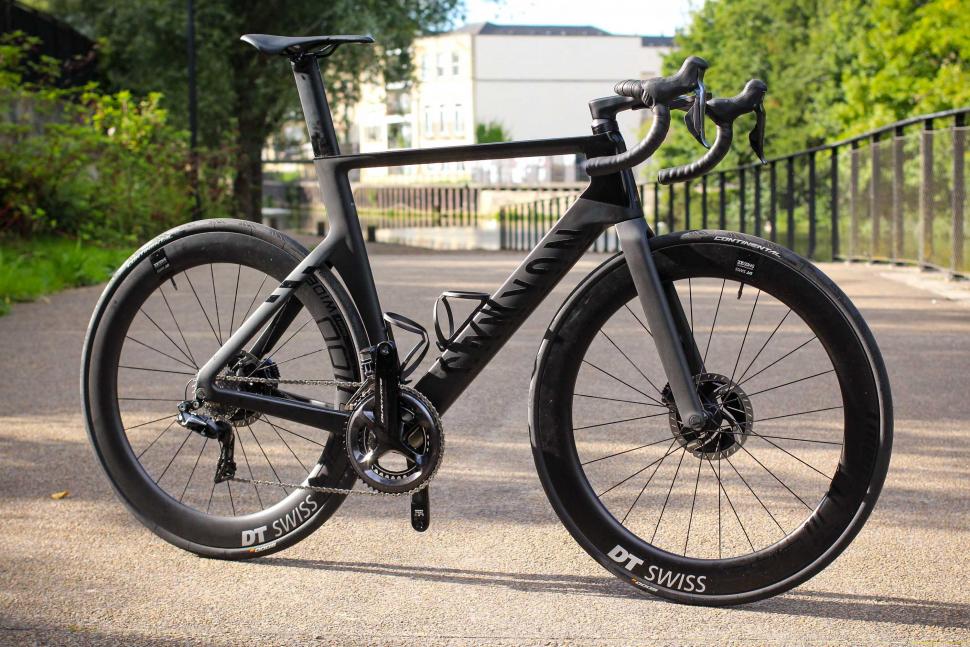 2021 Canyon Aeroad CFR Dura Ace Di2.jpg
2021 Canyon Aeroad CFR Dura Ace Di2.jpgCanyon unveils 2021 Aeroad 065 road bike
Canyon has finally revealed the new version of its Aeroad aero road bike with, the brand claims, improved aerodynamics, internal cables on most models, and a reduced weight. Canyon also says that the updated Aeroad offers sharper handling than previously and enhanced comfort. You might have guessed that all of those features would be on the agenda but how about this one: width-adjustable handlebars that fold down for easier travel. There’s no way you were expecting that!
Here's a bunch of bullet points to get you up to speed before we start:
- New disc brake-only range was developed with Swiss Side.
- Bike alone is 7.4 watts more efficient than previous model at 45km/h (28mph).
- Top-level Aeroad CFR is 14% stiffer and 168g lighter than the previous Aeroad CF SLX.
- Cockpit on higher level models is foldable and width-adjustable.
- 15mm of handlebar height adjustment with no need to cut the fork steerer.
- Geometry has been relaxed slightly.
Developing the Aeroad
Having worked with Swiss Side in the bike’s development, Canyon says that the 2021 Aeroad is the new aero benchmark.
Why the partnership?
“The relationship between Canyon and Swiss Side unites the best in aero expertise and bike development expertise,” says Canyon. “The working relationship between the two can be summed up like this: Swiss Side are industry experts in optimising aerodynamics, Canyon are experts in building the best bikes. With this shared knowledge, together we were able to create the fastest bike possible in the new Aeroad.”
Swiss Side has advanced CFD (computational fluid dynamics) software, and access to the supercomputers required to process it.
Check out our First Ride Review of the Canyon Aeroad CFR Di2
“The aerodynamic development of the Aeroad CF SLX launched in 2014 comprised running three CFD test loops,” says Canyon. “That means three geometries (forms) were tested before a final tube profile (Trident 2.0) was decided upon and applied at key points across the frame, namely the cockpit, head tube, down tube and seatstays.
“With extra capacity thanks to Swiss Side, 22 test loops were carried out by a CFD engineer working full-time for four months. Therefore, over seven times more testing went into the CFD development of the new Aeroad.
“What’s more, each element of the frame was broken down to assess the most efficient aero form for that component, going a step beyond the development of the previous Aeroad. This technique is what enabled us to move the game on with the new Aeroad.”
Canyon says that the outgoing Aeroad CF SLX was the CFD benchmark, and test loops were run to measure the performance of different geometries with incremental changes made each time to try out different forms.
It split the bike into key areas – such as the head tube, down tube, fork– so that changes to each could be judged independently, and then combined the best-performing elements.
Simulations were carried out with model legs on cranks positioned both horizontally and vertically, and without legs. Tests simulated yaw angles from +20° to -20° at speeds of 45km/h (28mph).
Once the fastest forms were determined, they were taken to the GST wind tunnel in Germany for validation. Canyon and Swiss Side engineers created a steel frame to which 3D-printed parts could be attached, allowing them to test a large number of samples and configurations efficiently.
Prototypes were tested alone in the wind tunnel, and also with spinning dummy legs, Canyon engineers having built a carbon-fibre leg dummy specifically for gathering data.
Canyon says that its engineers made great use of the sailing effect in the design of the new Aeroad.
“Given the correct tube profiles, sailing effect occurs at certain yaw angles when the tube profiles interact with the air like a wing, generating lift and therefore propelling the rider forward,” says Canyon. “This means in certain crosswind conditions the rider benefits from a drag reduction. They can lean into the wind and accelerate, providing a huge performance advantage over non-aero frames.
“While the wheels are the most important component on a bike when it comes to harnessing sailing effect, the frame also plays a role. By optimising the tube profiles on the new Aeroad we were able to better exploit this phenomenon far more than on its predecessor.”
Of course, designers can’t focus solely on aerodynamics. Factors like weight, stiffness, ergonomics, handling and comfort also help to determine a bike’s overall performance. The Aeroad’s finished design isn’t the most efficient that the engineers produced in terms of aerodynamics.
“The fastest iteration tested, Geometry 19, had incredibly long chord tube profiles at the fork, handlebar tops, seat tube, seatpost and chainstays, right at the limit of UCI regulations,” says Canyon.
“At this point an important dialogue takes place between Swiss Side and Canyon aerodynamicists, Canyon Development Engineers, Product Managers and Designers. The key is to work out how much of the fastest form can be preserved in order to create the best performing bike overall.
“Take the long chord tube profiles. Generally, the longer you go, the better the aero performance will be. However, the extra material required to create these profiles is detrimental to weight targets and has a negative effect on ride quality. Super deep handlebar tops reduce drag the most, yet have terrible ergonomics when climbing or cruising on the tops.
“So, where do you draw the line? This is where the knowhow of our team and all its players is critical – the ability to enhance aerodynamics, but not at all costs, to make the fastest bike possible.”
The finished Aeroad
Canyon says that it was able to incorporate many of the elements that were fastest in the wind tunnel into the new Aeroad (R065) design. The tube profiles aren’t as deep as those of Geometry 19, but they are deeper than those of the old Aeroad (R050). The new Aeroad also has a lower profile cockpit.
According to Canyon, the R065 model is more efficient than the R050 by the following amounts:
Bike alone: 7.4 watts
Bike with model legs in place: 4.4 watts
Bike legs and two bottles in place 5.4 watts.
Watts isn’t a measure of drag; what Canyon means, of course, is that it would take less power, of the above amounts, to achieve 45km/h on the new bike. For comparison, Geometry 19 required 11.5 watts less than the previous Aeroad.
As mentioned above, improved aerodynamics can often lead to increased weight because of the deeper, more complex tubes required. It can also affect ride quality because of a lack of compliance in those tubes.
Canyon’s goal was to get a built-up new Aeroad as close as possible to the 6.8kg UCI minimum weight limit for racing without sacrificing stiffness. It says that the engineers pushed down tube width as far as they could before it had a negative impact on aero performance in order to provide a solid core to the frame.
“Higher volume tubes are geometrically stiffer and stronger, which means they require less material so can be made lighter too,” says Canyon. “ On the top-line Aeroad CFR we selectively applied the same super-high modulus and super-high tensile fibres that first featured on the Ultimate CFR.
“The end result in a 14% gain in frameset stiffness and 168g loss in mass for the new Aeroad CFR over the previous Aeroad CF SLX.”
New cockpit design
The previous generation Aeroad had external cables/hoses between the handlebar and the down tube/ fork crown, but Canyon has introduced a completely new cockpit design one the new Aeroad CFR and Aeroad CF SLX (the Aeroad CF SL uses the same cockpit as the previous generation Aeroad R050).
This system allows Canyon to ship bikes with less hassle – and that’s particularly important for a direct-to-consumer brand – and also makes it easier for you to travel with your bike.
The CP0018 Aerocockpit (combined handlebar and stem) fitted to all Aeroad CFR models as well as the CF SLX features a wing section on either side. The stem and the central portion of the tops are one piece, and the outer sections of the tops and the drops are separate and can be detached (with the cables and hoses remaining attached). This significantly reduces the width of the bar when the bike needs to be packaged.
The CP0018 Aerocockpit has another clever feature – it’s width adjustable. You can alter the amount of the wing section that’s inserted into the base/middle section before tightening the clamping screws that hold the parts together.
You have 20mm of adjustment on each side, so you can run a 410mm bar at a width from 390mm to 430mm.
Bars come wrapped for the middle setting. If you want to go narrower you make the necessary adjustments and cut the bar tape down. If you want to go wider you’ll need to re-tape in order to cover the newly exposed sections.
The CP0018 combined handlebar/stem is said to be 27% lighter than on the previous generation Aeroad.
Canyon says it has been able to drop the weight because the bar no longer requires a wall thick enough to accommodate a Di2 junction box recess; the junction box can now be fitted into the end of the bar.
“This means the stem could be closed for structural stability and profit from more conventional wall thicknesses, saving 37g,” says Canyon.
No-cuts height adjustment
Beyond that, Canyon has designed a new way of adjusting your stem position that doesn’t involve cutting down your fork steerer. It says it was dissatisfied with the existing system for a couple of reasons: once you’ve cut off excess fork steerer height, there’s no way of going back without replacing the fork, and cutting a fork steerer requires tools (and skills) that not every consumer possesses.
Canyon’s solution on new Aeroad CFR and SLX models is to move back to a quill stem system, albeit in a modified form.
“The fork steerer is effectively split into two sections, a smaller diameter 1-1/8in bottom attached to the fork, and a larger diameter 1-1/4in top part bonded securely to the stem.
“The bottom is installed into the top half and secured in place by a clamping screw and wedge pressing onto a fork insert. A key safety feature is that the system is self-locking, meaning even if the clamp screw is not properly secured, the cockpit will still stay attached with the bars pointing in the right direction.
You get 15mm of height adjustment via 10mm and 5mm aluminium spacers, and there’s never a need to cut the fork steerer.
Seatpost
The SP0046 seatpost that features on all new Aeroads has a far deeper profile than that seen on the old Aeroad, yet it’s also a smidge lighter (6g; it all counts!).
“The lower half of the seatpost – where the clamp is applied – has only half the depth of what is visible above the top tube to provide a stable clamping interface, which saves material,” says Canyon.
“The sections of the seatpost that are exposed to the increased stresses applied where the post exits the seat tube are reinforced, but above this the rear section of the post is effectively a hollow carbon shroud there to ensure optimal aerodynamic performance. The front section of the two-part construction guarantees the structural support required from a load-bearing component.”
Canyon says that the new design also reduces the transmission of high-frequency vibrations from road to rider.
Weight savings
Here’s how the new (R065) Canyon Aeroad CFR stacks up against the previous generation R050 Canyon CF SLX in terms of weight.
The ‘small parts’ mentioned are metal components. The new cockpit configuration makes a conventional headset cap and bolt redundant, and a new seatpost clamping system save a few more grams.
Geometry
Canyon has changed the geometry of the new Aeroad to bring it inline with that of the brand’s Ultimate lightweight road bike. The previous Pro Geometry, with a long reach and low stack height, made for an aggressive ride position, but it wasn’t sustainable for everyone. Canyon believes that the Ultimate’s geometry is the best balance for most riders.
A new medium sized Aeroad has a 9mm higher stack and 5mm shorter reach than the previous generation when measured at the cockpit (with CP0018 Aerocockpit and 15mm of spacers).
Whereas the previous Aeroad CF SLX had a stack/reach of 1.39 (in a size M), the figure is 1.42 for the new Aeroad CFR.
Canyon is also producing a CP0015 Aerocockpit that has a flatter profile than the CP0018 mentioned above, making for a front end that’s 20mm lower, although only pro riders will also have access to it initially. The CP0015 also comes with width adjustment.
Canyon has reduced the length of the Aeroad’s chainstays from 415mm to 410mm, having previously increased the length in order to get the right chainline with the shift to wider rear hub spacings.
“On the current generation of disc brake groupsets, extended chainstays are no longer required,” says Canyon. “That means we could resort back to a shorter 410mm chainstay across all sizes to guarantee the same levels of agility offered by the 2014 rim brake Aeroad.
650B wheels on Aeroad CF SL
Canyon offers seven frame sizes on the Aeroad CFR and CF SLX platforms, from 2XS to 2XL, with 700C wheels equipped across the board.
There’s an additional 3XS model on the new Aeroad CF SL platform, suitable for riders down to about 152cm tall. The 2XS and 3XS models are specced with 650B Reynolds AR wheels that are intended to provide better handling for smaller riders.
Tyres
All Aeroads are now specced with a 25mm tyre at the front for the best aerodynamic performance, and a 28mm rubber at the back for extra comfort and traction.
Canyon says that the Aeroad was designed specifically for this tyre setup, with bottom bracket heights adjusted accordingly.
The range
There are eight Aeroad models spread across three different platforms. The Aeroad CF SL offers mechanical shifting and comes with external cable routing between the handlebar and the down tube/ fork crown while the Aeroad CF SLX and Aeroad CFR have fully internal cable routing.
The Aeroad CFR – which stands for Canyon Factory Racing – is said to be lighter and stiffer than the Aeroad CF SLX.
Aeroad CFR models feature top-line groupsets and wheels.
Aeroad CFR Disc 9 EPS £9,299
Groupset Campagnolo Super Record EPS
Wheelset Campagnolo Bora One 50
Handlebar Canyon CP0018 AeroCockpit
Aeroad CFR Disc 9 AXS £8,199
Groupset SRAM Red eTap (with power meter)
Wheelset DT Swiss ARC 1100 Dicut 62
Handlebar Canyon CP0018 AeroCockpit
Aeroad CFR Disc 9 Di2 £7,699
Groupset Shimano Dura-Ace Di2
Wheelset DT Swiss ARC 1100 Dicut 62
Handlebar Canyon CP0018 AeroCockpit
Aeroad CF SLX Disc 8 AXS £5,499
Groupset SRAM Force eTap AXS
Wheelset DT Swiss ARC 1400 Dicut 62
Handlebar Canyon CP0018 AeroCockpit
Aeroad CF SLX Disc 8 Di2 (above) £5,199
Groupset Shimano Ultegra Di2
Wheelset DT Swiss ARC 1400 Dicut 62
Handlebar Canyon CP0018 AeroCockpit
Aeroad CF SL Disc 8 £3,799
Groupset Shimano Ultegra
Wheelset Reynolds AR 58/62 DB
Handlebar Canyon CP10 AeroCockpit
Aeroad CF SL Disc 8 WMN (above) £3,799
Groupset Shimano Ultegra
Wheelset Reynolds AR 58/62 DB
Handlebar Canyon CP10 AeroCockpit
Aeroad CF SL Disc 7 £3,399
Groupset Shimano 105
Wheelset Reynolds AR 58/62 DB
Handlebar Canyon CP10 AeroCockpit
The Aeroad CFR Disc is also available as a frame and brake kit for £4,499.
The new Aeroads are available now. Get more info at www.canyon.com.
Mat has been in cycling media since 1996, on titles including BikeRadar, Total Bike, Total Mountain Bike, What Mountain Bike and Mountain Biking UK, and he has been editor of 220 Triathlon and Cycling Plus. Mat has been road.cc technical editor for over a decade, testing bikes, fettling the latest kit, and trying out the most up-to-the-minute clothing. He has won his category in Ironman UK 70.3 and finished on the podium in both marathons he has run. Mat is a Cambridge graduate who did a post-grad in magazine journalism, and he is a winner of the Cycling Media Award for Specialist Online Writer. Now over 50, he's riding road and gravel bikes most days for fun and fitness rather than training for competitions.
Latest Comments
- hawkinspeter 30 min 31 sec ago
You need to try a different shop - my Bonts were sold as a pair
- levestane 31 min 53 sec ago
This is tech doing it's job, extracting money from punters.
- imajez 33 min 58 sec ago
I never pay attention to Facebook suggestions/ads, but the very beautiful and clever split frame design in a Feather Cyles post caught my eye. It...
- belugabob 43 min 44 sec ago
Or we could adopt the Japanese approach.....
- chrisonabike 58 min 38 sec ago
Agreed, but in the UK we have policing which to a greater or lesser extent relies on assistance from members of the public. So part of that...
- SecretSam 1 hour 12 min ago
Maybe take some drugs to calm your nerves...
- SecretSam 1 hour 13 min ago
So...don't cycle on it. Lots of other routes around that area. Source: I used to work there.
- Hirsute 1 hour 18 min ago
Armando Iannucci "Today is Day One of humanity’s Idiolithic Era."
- Steve K 1 hour 33 min ago
My photochromic specs have just turned up in the post today
- Paul J 1 hour 40 min ago
Downhill Alpe d'Huez TT would be _awesome_. And someone should organise one for real!...
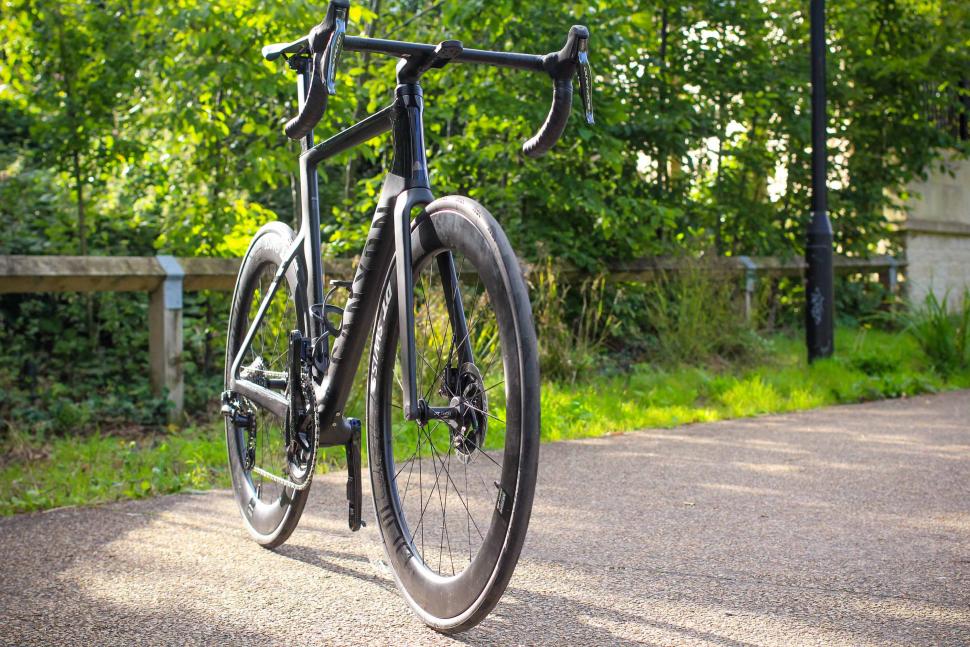

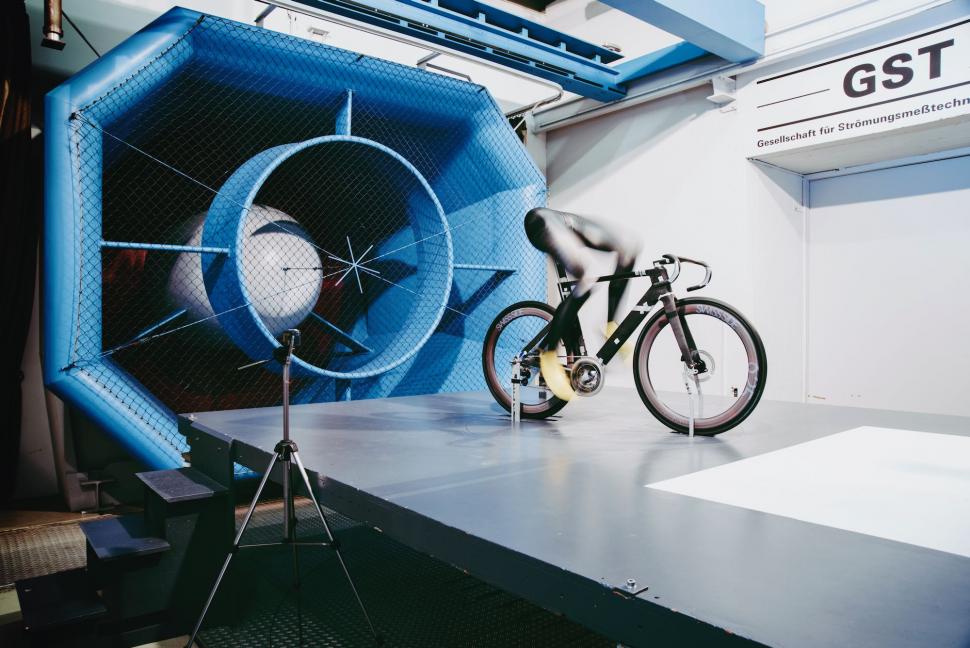

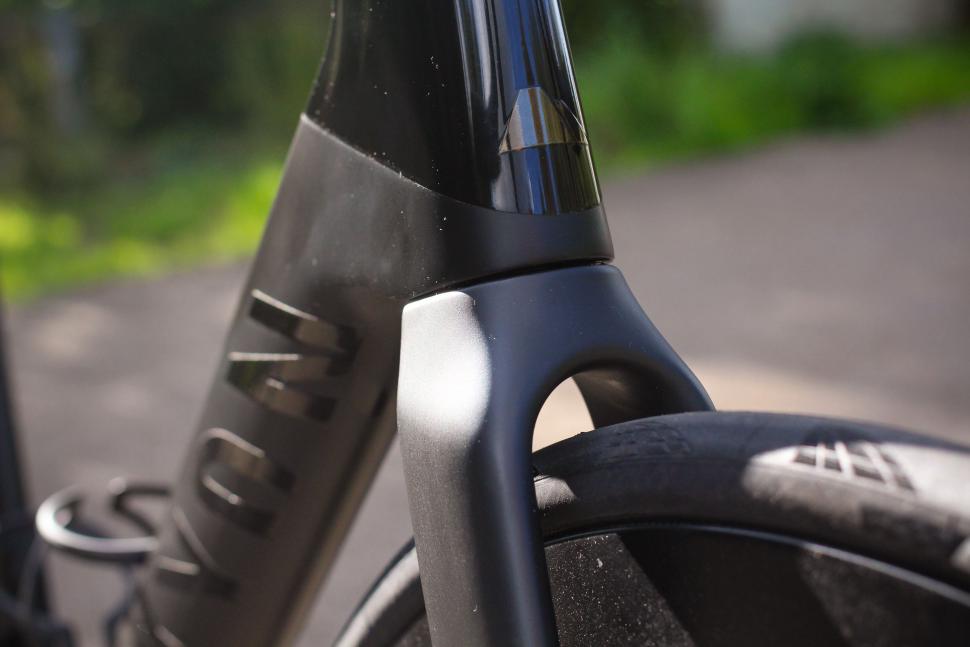
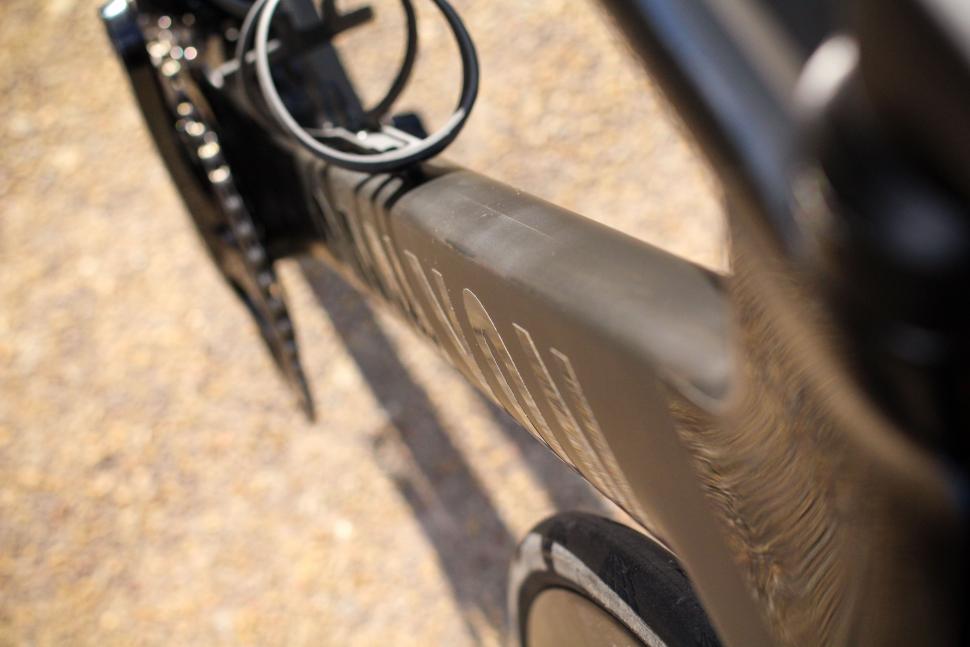
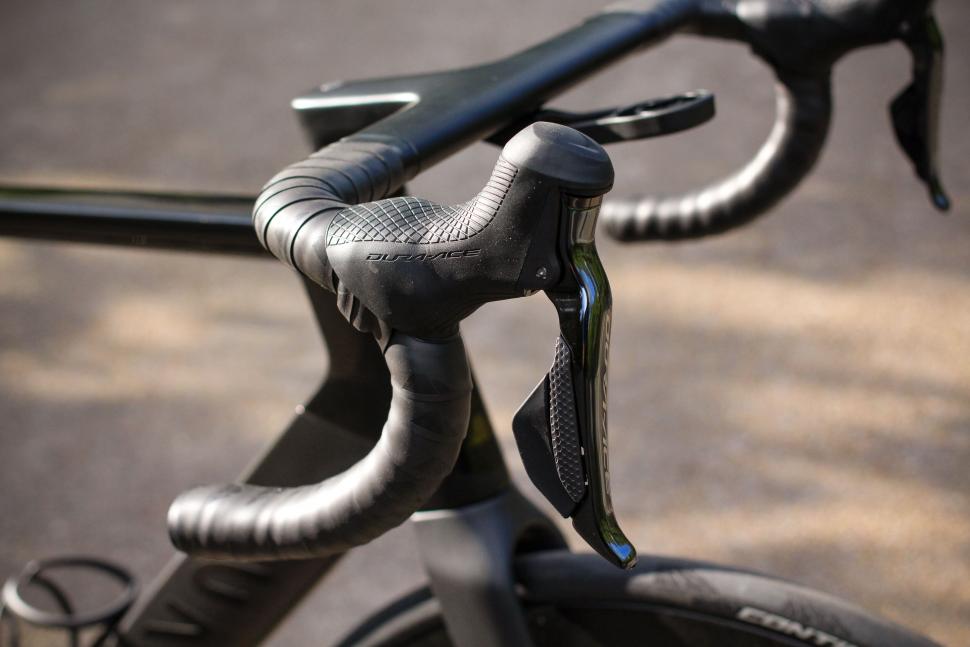
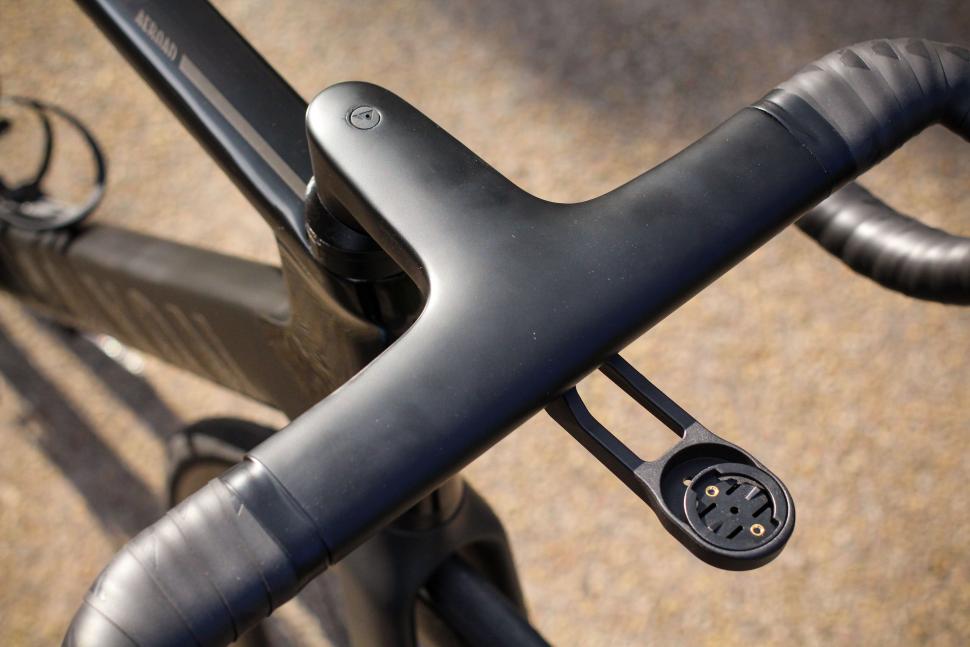

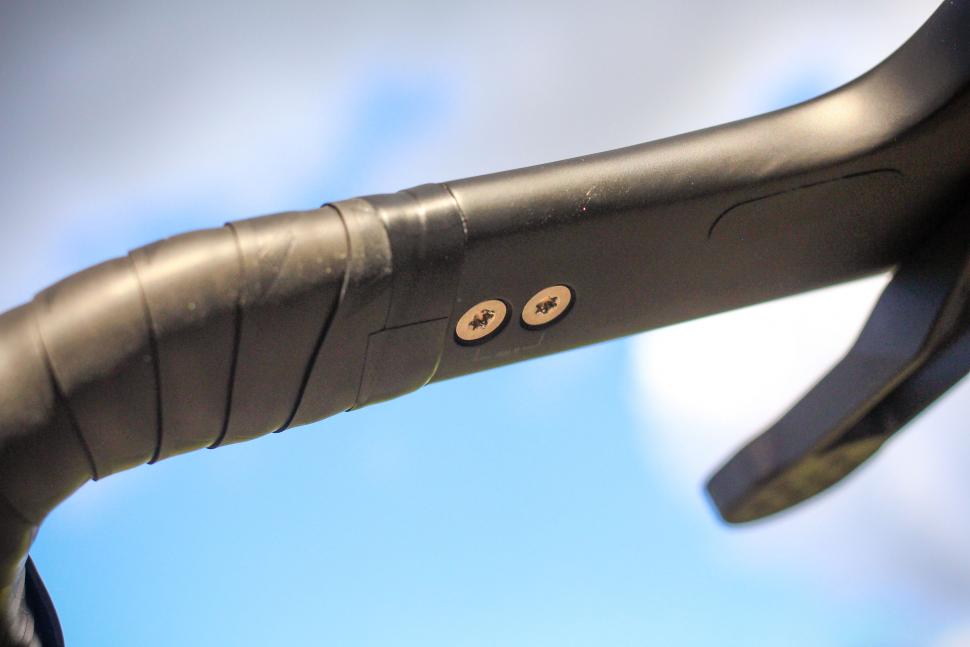










































Add new comment
9 comments
I understand that this is a flagship bike, but the prices of this bike (and pretty much any new bike these days) seem to be going up and up all the time.
When I got my last bike a couple of years ago, I looked at the canyon bikes at the cheaper end of the market and they seemed much more affordable. Are Canyon bikes still considered competitively priced because of their direct to customer sale?
Lovely bike though.
They are when compared to the RRP of other brands. It's true that flagship prices are insane when you consider what you actually get.
For entry level bikes, however, the performance you get for your dollar has never been better. Even Tiagra or lower is more than enough for most everybody these days, while you might sacrifice a gear in the rear your shifting performance will be 95% of what you get on the higher end groupsets.
The width adjustable bars is one of those strokes of genius that when you see it makes you wonder how no-one came up with it before- briliant innovative thinking
Especially as you should be able to change the ends to suit your particular riding.
It would be perfect for an 'All Road' bike, flared ends for gravel riding, standard drops for road for example.
But surely it's not well executed. You have to retape after an adjustment, and you can't choose drops with a different flare etc unless you're prepared to move the levers and retape. And can it be as strong for the same weight?
I saw a cycling weekly video about the launch and they'd taped up to the point where the drop section met the central section, looked really slick.
You can get hydraulic couplers so with wireless or electric shifting it should be possible to just swap bar ends around.
You'd obviously need a full set of shifters installed to your other bar ends which would be a bit extravagant but feasible.
Could make a proper n+1 killer with different shifters, bars and wheels all easily swapped out.
Hydraulic couplers? Never knew. But you would risk air bubbles each time you swapped so would need to bleed more.
Apparently not according to the manufacturer, but I have not seen any long term reviews so take that claim with a pinch of salt for now.
I'll try and find a link to it.
Edit:
https://cyclingtips.com/2020/09/no-22s-new-travel-bike-couplers-lighter-...
I would say no-one else has bothered with adjustable Handlebars using this kind of system because it is a terrible engineering solution! Creak, creak, creak!!!